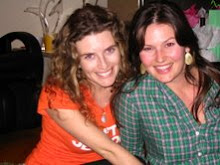 Yeah, we all loved that scene in American Beauty at the very beginning where the lone plastic grocery bag drifted through the street. In theory. Because it was a movie. In real life, we don’t like plastic bags flying around our streets, our beaches, our landfills. We don’t like those plastic grocery bags at all. (It’s kind of like how we all love that scene where John Cusack holds up the stereo in Say Anything, but if a guy did that in real life we would probably think he was an annoying, scary stalker).
Yeah, we all loved that scene in American Beauty at the very beginning where the lone plastic grocery bag drifted through the street. In theory. Because it was a movie. In real life, we don’t like plastic bags flying around our streets, our beaches, our landfills. We don’t like those plastic grocery bags at all. (It’s kind of like how we all love that scene where John Cusack holds up the stereo in Say Anything, but if a guy did that in real life we would probably think he was an annoying, scary stalker). So, this week we’re giving props to San Francisco, the bastion city of eco-progression, who has outlawed the old, decidedly eco-unfriendly and flimsy plastic bags from all grocery stores, drug stores and major retailers. Joining the ranks of South Africa, Taiwan, Paris and Bangladesh, San Francisco shoppers will now have a choice of canvas (BYO), recyclable paper or biodegradable plastic.
County Supervisor Ross Mirkarimi says San Fran was producing almost 200 million of these little bags per year and is hoping their ordinance has a domino effect, rippling through the rest of California (who uses more than 19 bullion bags per year, creating 147,000 tons of waste) and elsewhere. Check out the whole L.A. Times article.
So….good for San Fran, and back to you, dear reader. We’ve talked about this before, and felt we were due for a little refresher. Let us put this bluntly—neither paper, plastic or biodegradable plastic are GOOD for the environment. Paper takes lots of energy and trees to produce. Plastic uses bad toxic chemicals and the bags kill animals who think that it’s food. Biodegradable plastic is BETTER, but still creates waste. What’s a shopper to do?
Canvas Bag it. By far, the best solution because it creates no waste and can be reused again and again. There’s so many cute ones out there now, too.
Re-Use your paper bags. If you’re buying cartfuls of groceries each week and canvas bags just aren’t feasible, use our old advice. Get paper bags, unload your groceries, put the bags back in your trunk (this is the key part, otherwise you will forget!) and then re-use them the next time you are at the grocery store.
Re-use your biodegradable plastic bags (if your grocery store has them). Biodegradable plastic bags are not only better for the environment, but are a LOT stronger than the regular plastic that breaks when you put more than one apple in it. So, since paper bags kill lots of trees, if you have biodegradable plastic as an option, then go for it and make sure to reuse.
Besides the "I'm doing my part" warm fuzzies, and the approving looks you’ll get from everyone in line for being such a good recycler, certain markets such as Trader Joe’s give even more incentives to reuse and recycle—like entering you in raffles to get $50 market gift cards or taking a little off your final bill.
What else can you do? Try to get this plastic bag ban over to your city…it’s pretty easy to contact your city officials. Just type in “mayor” and the name of your city into Google. They all have “Contact me” buttons where you can write your suggestion: In light of the new law in San Francisco that bans all non-biodegradable plastic bags from supermarkets, I would like to propose a similar law in _____ (your town), to reduce waste and be at the forefront of green cities in the world.
If you live in L.A., we did the legwork for you:
To contact Antonio Villaraigosa, go to: http://www.lacity.org/mayor/mayhow1.htm
To write a letter to the Los Angeles Environmental Affair department, simply email: eadinfo@mailbox.lacity.org
We can all take a cue form the beautiful city by the Bay and move away from our plastic grocery bags. Just think of the next Alan Ball film with a canvas bag floating down the street. Now that is beautiful.





